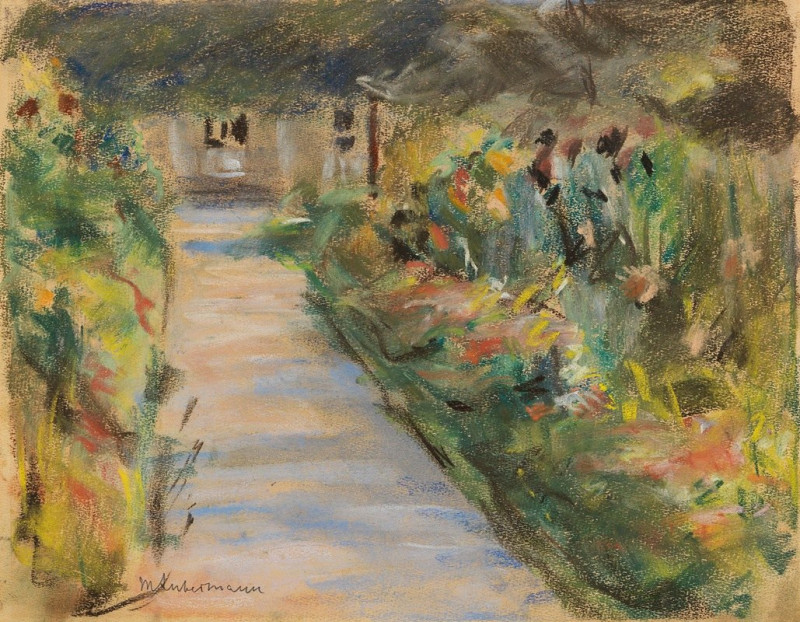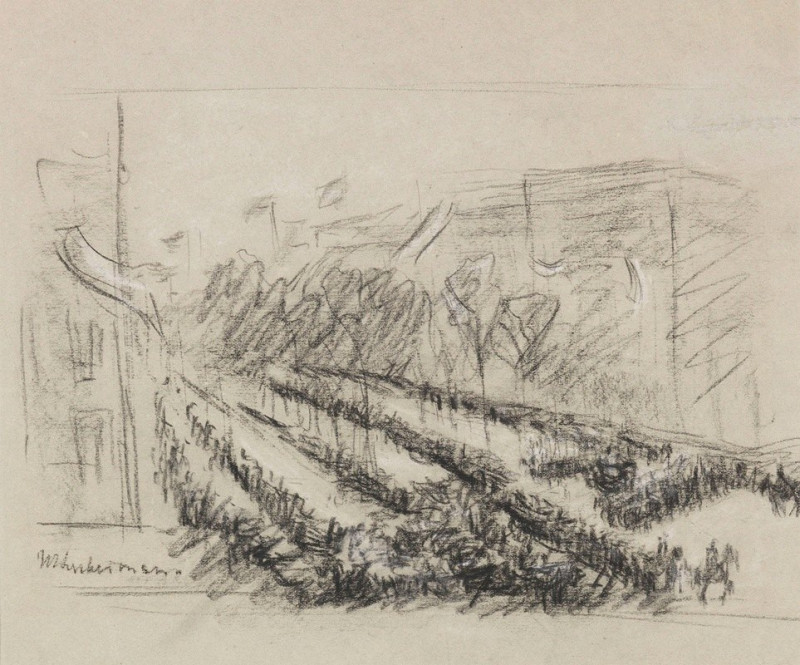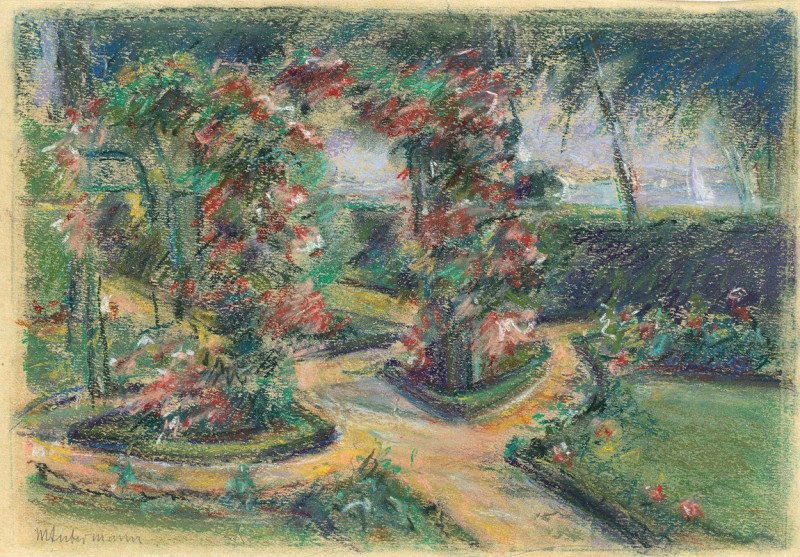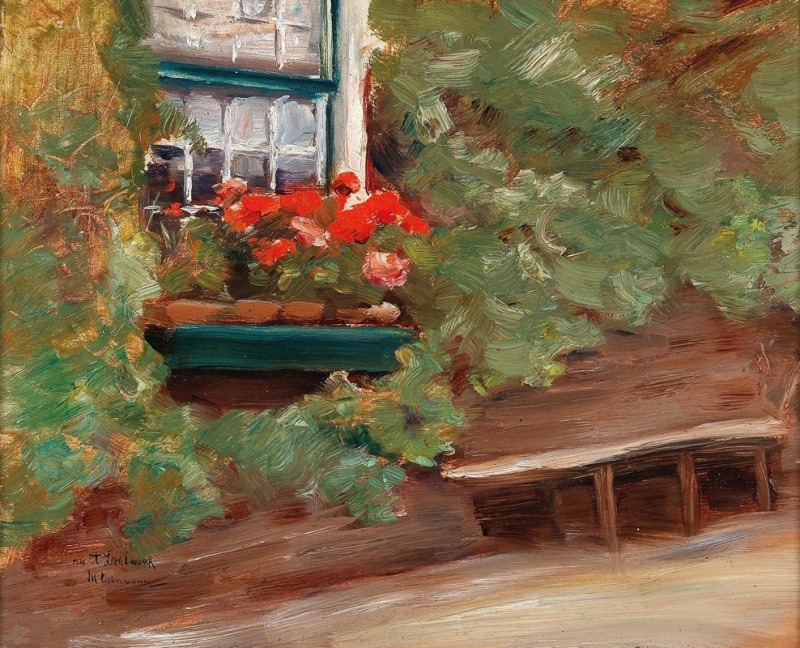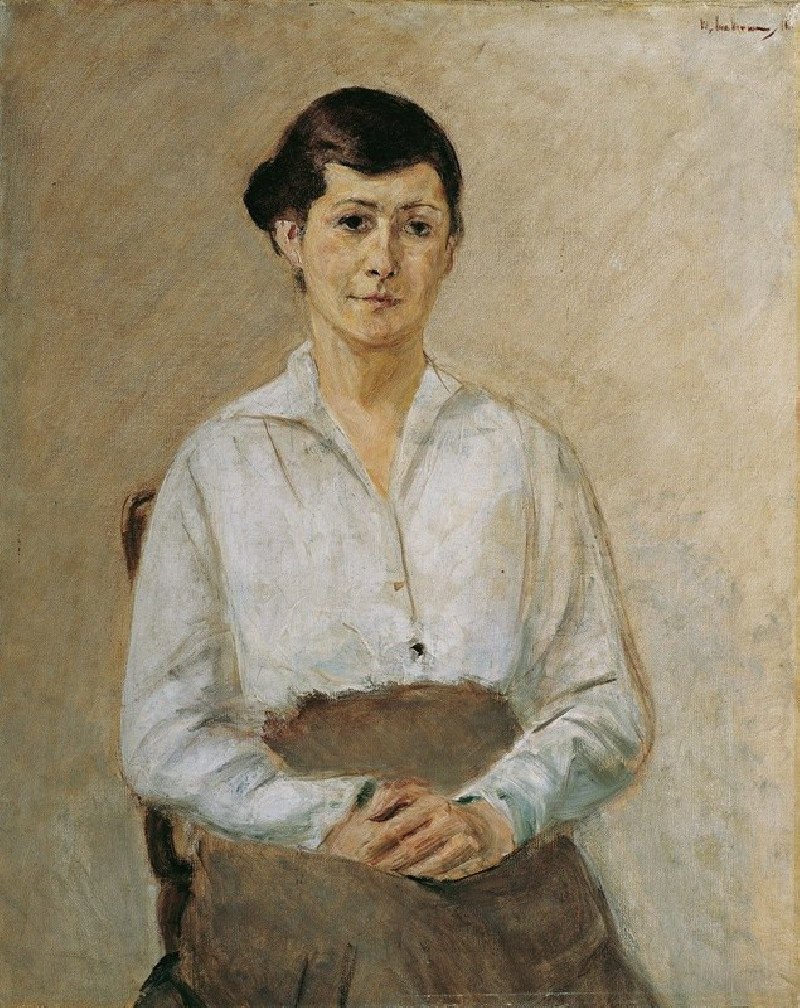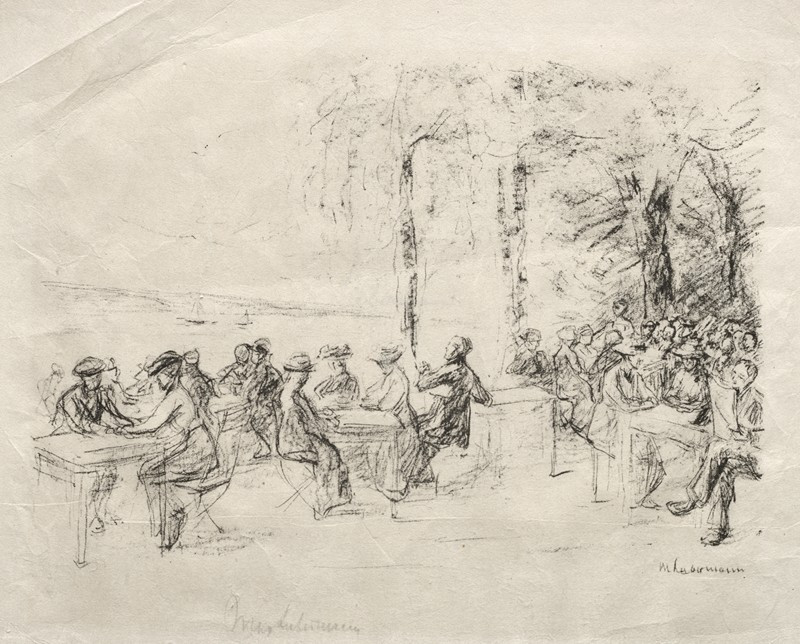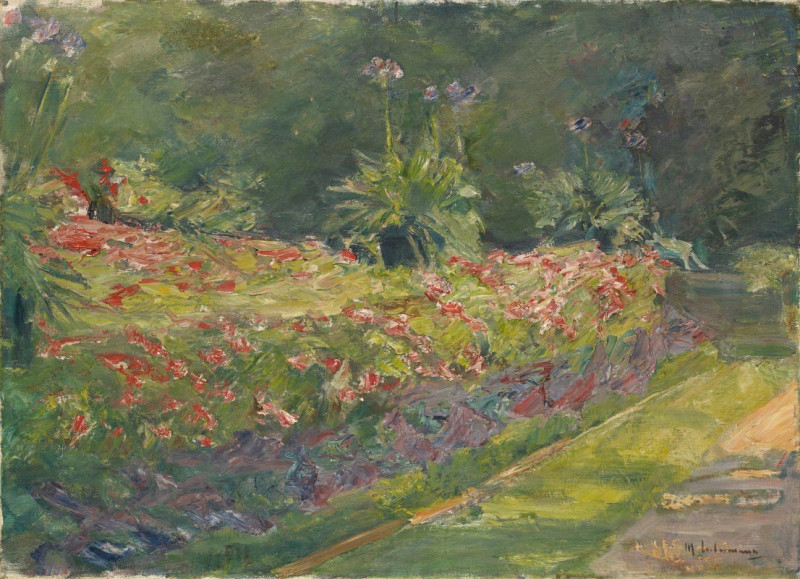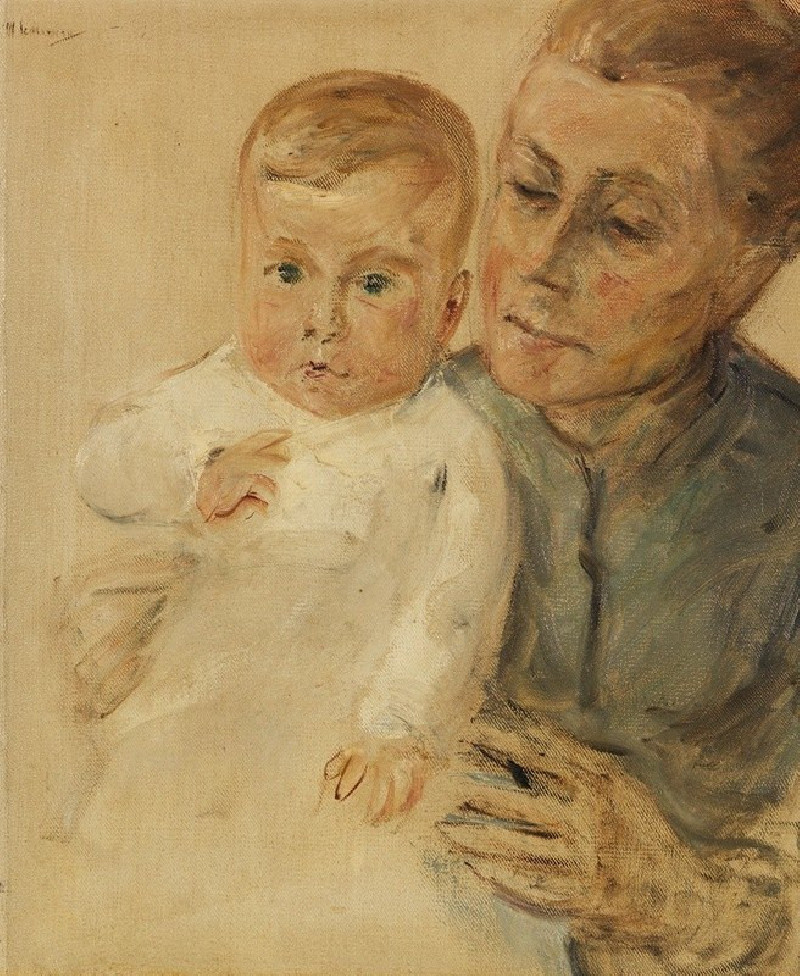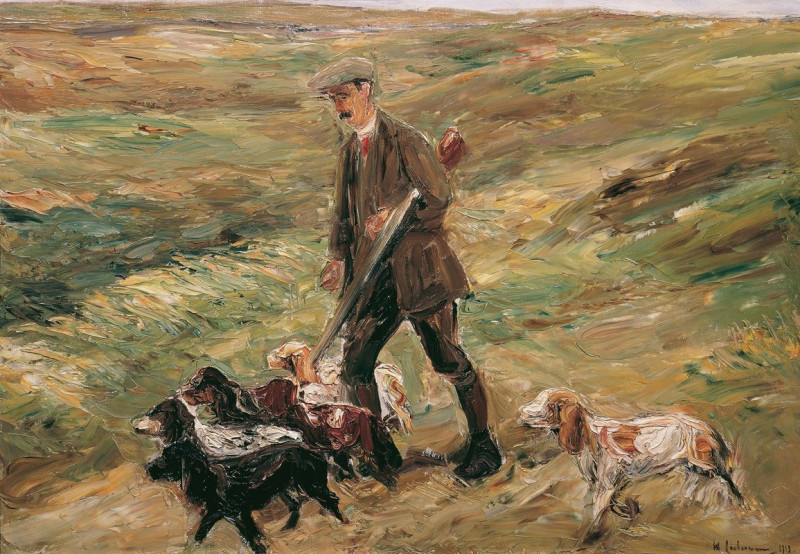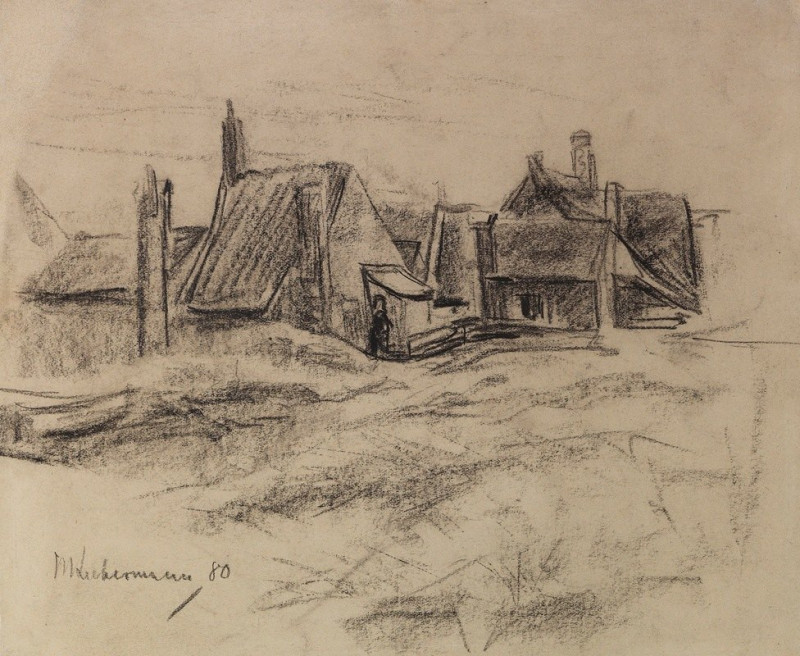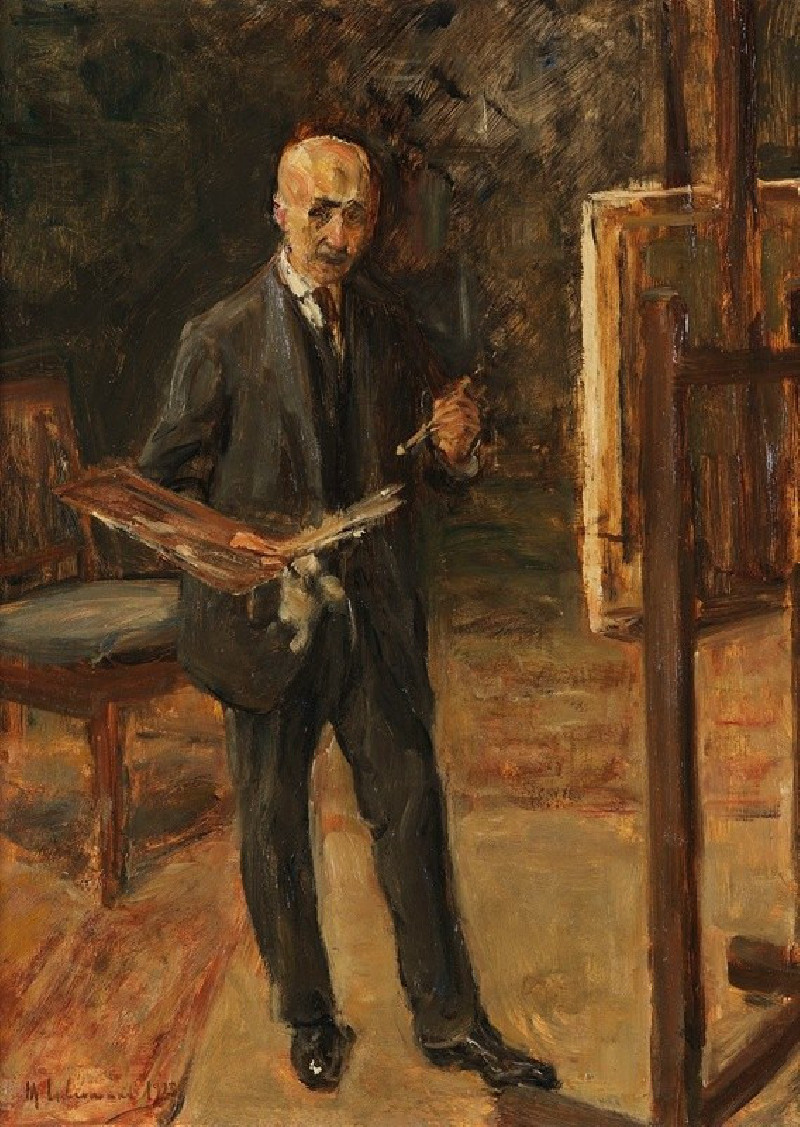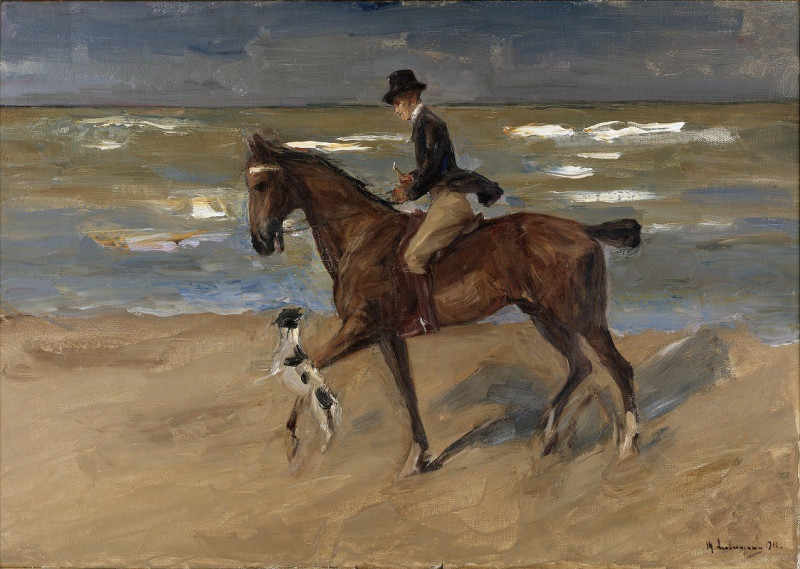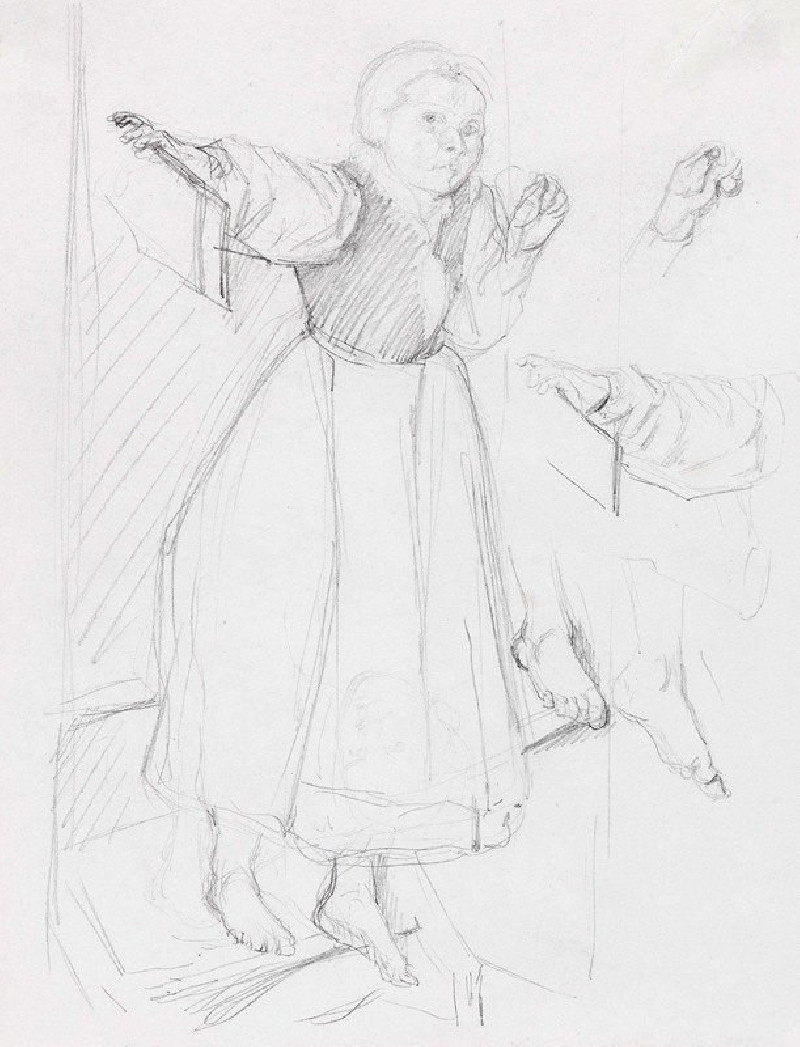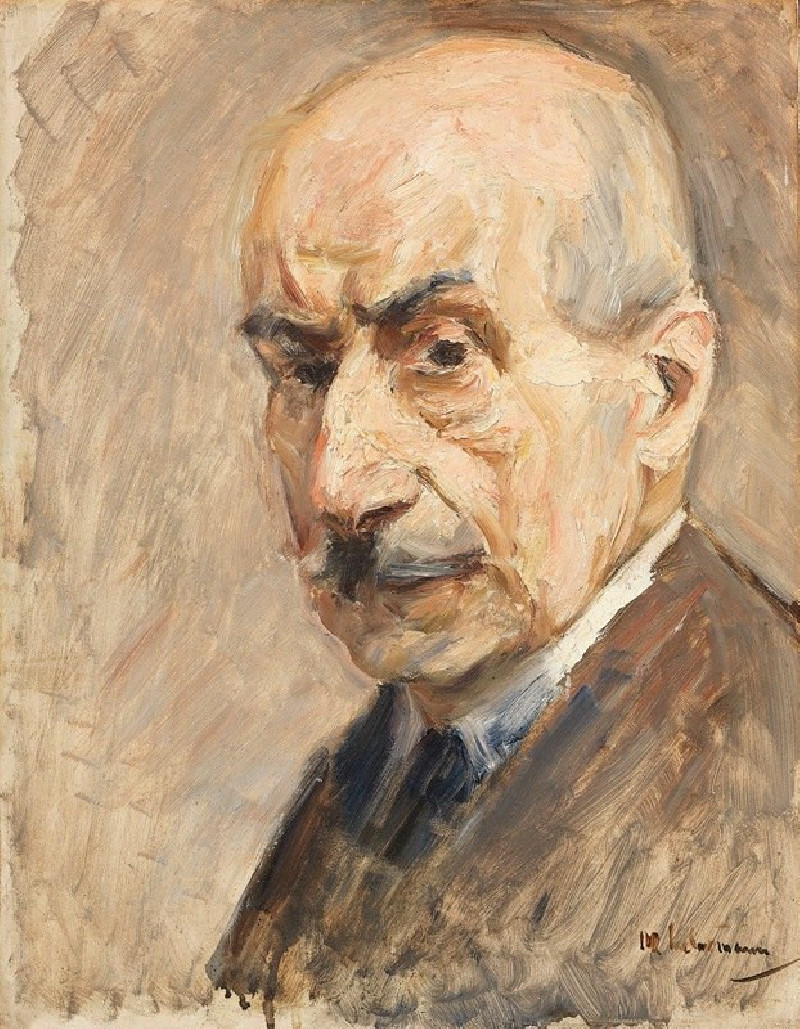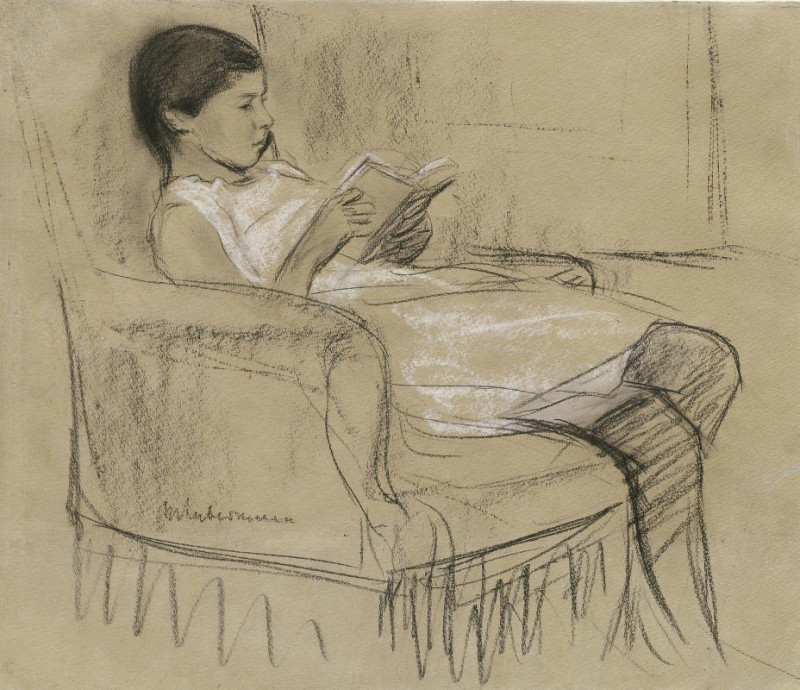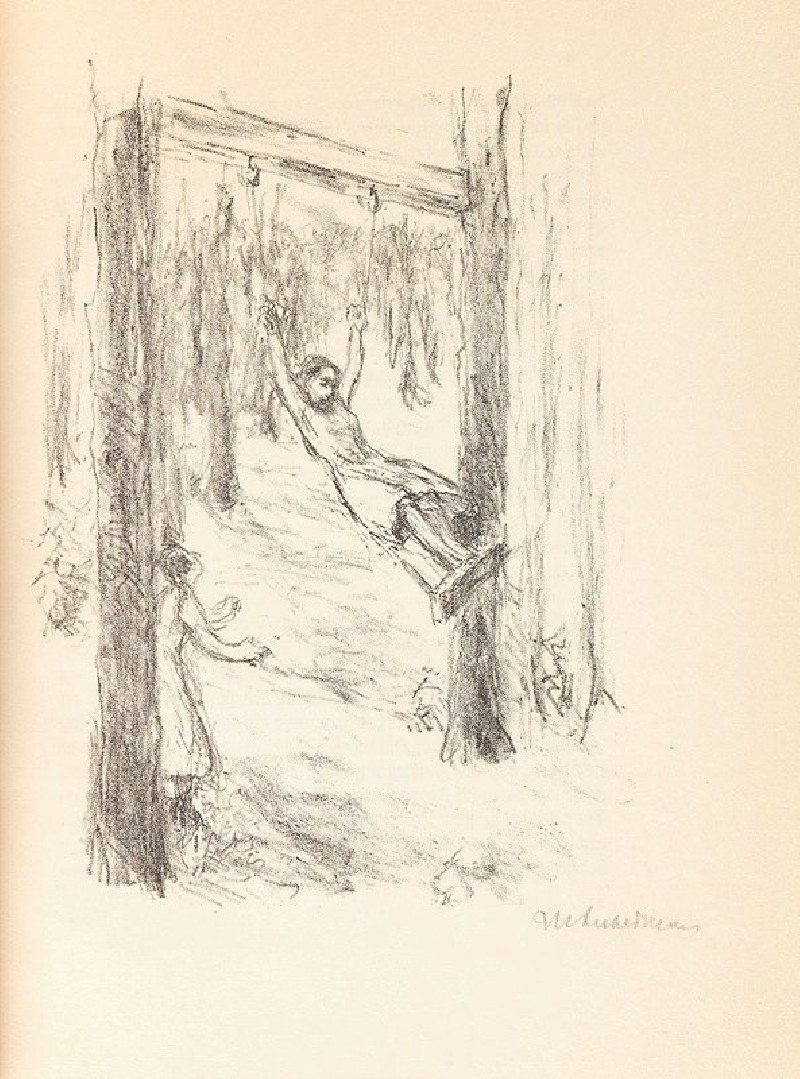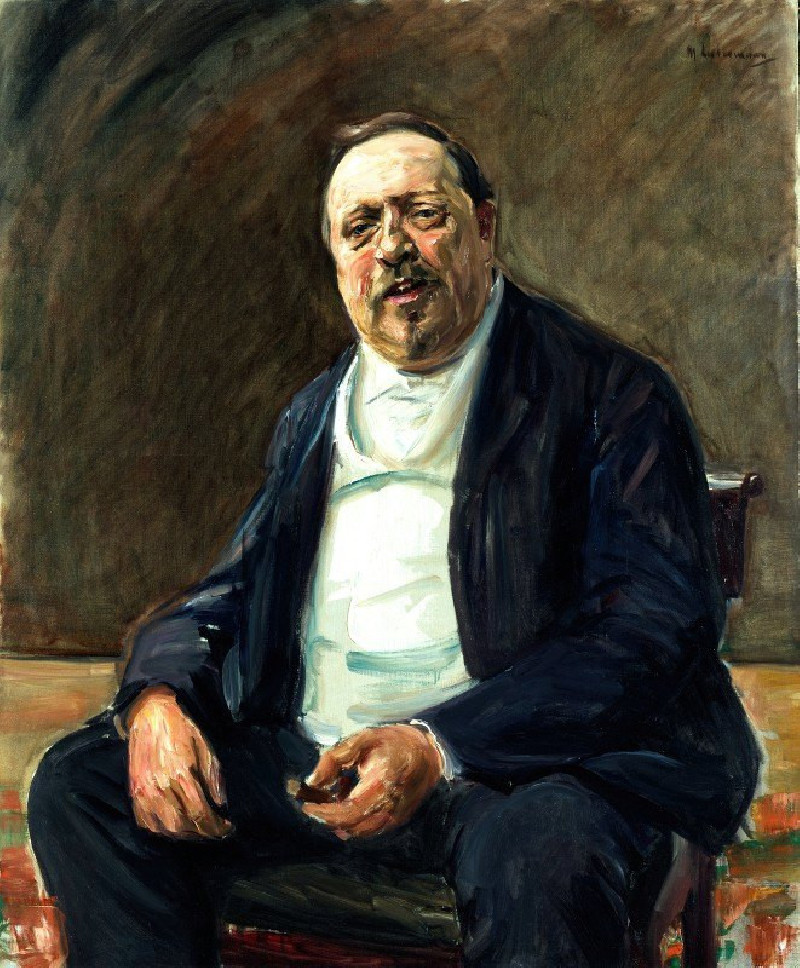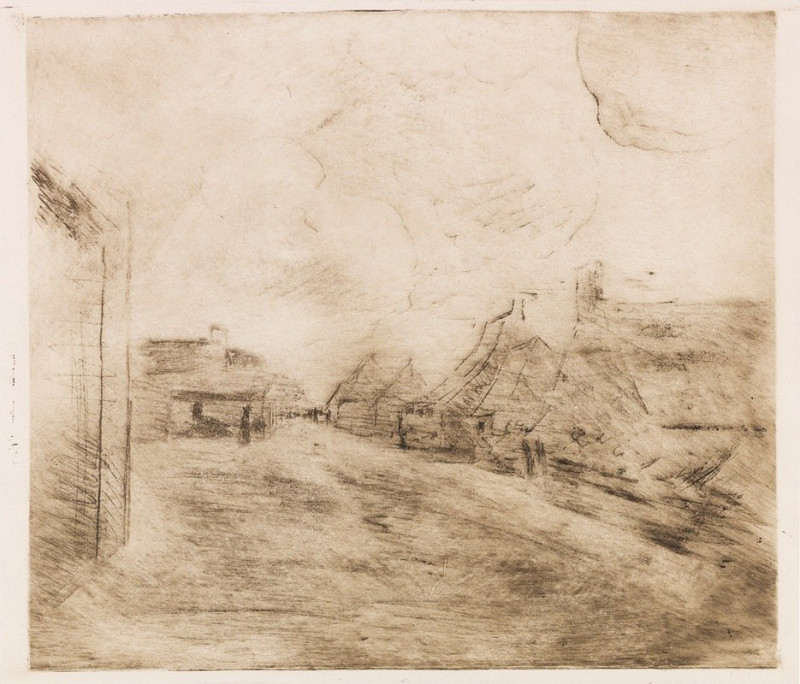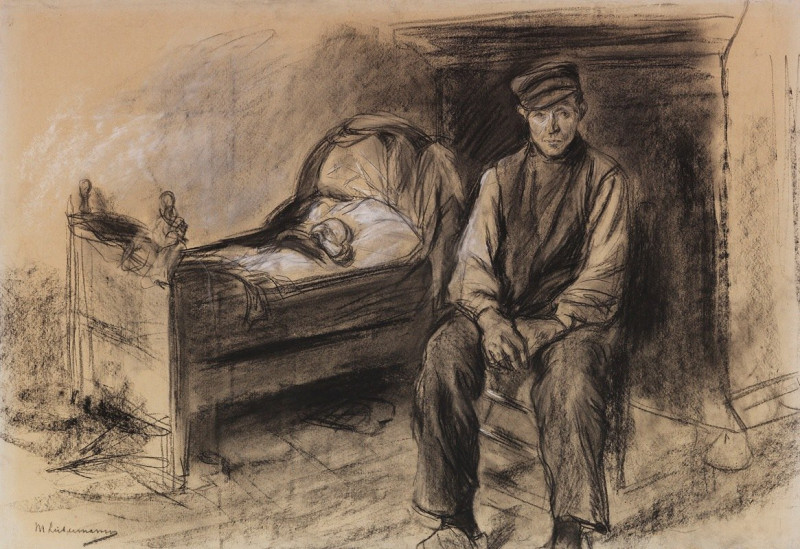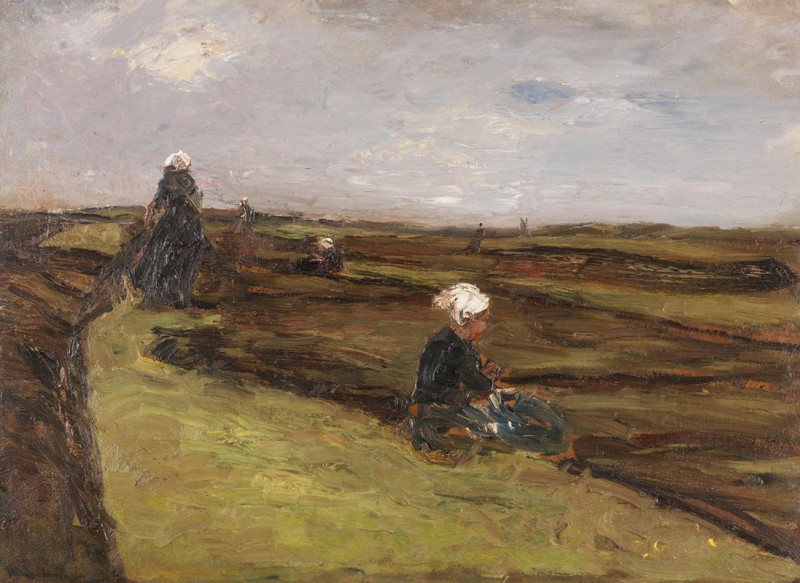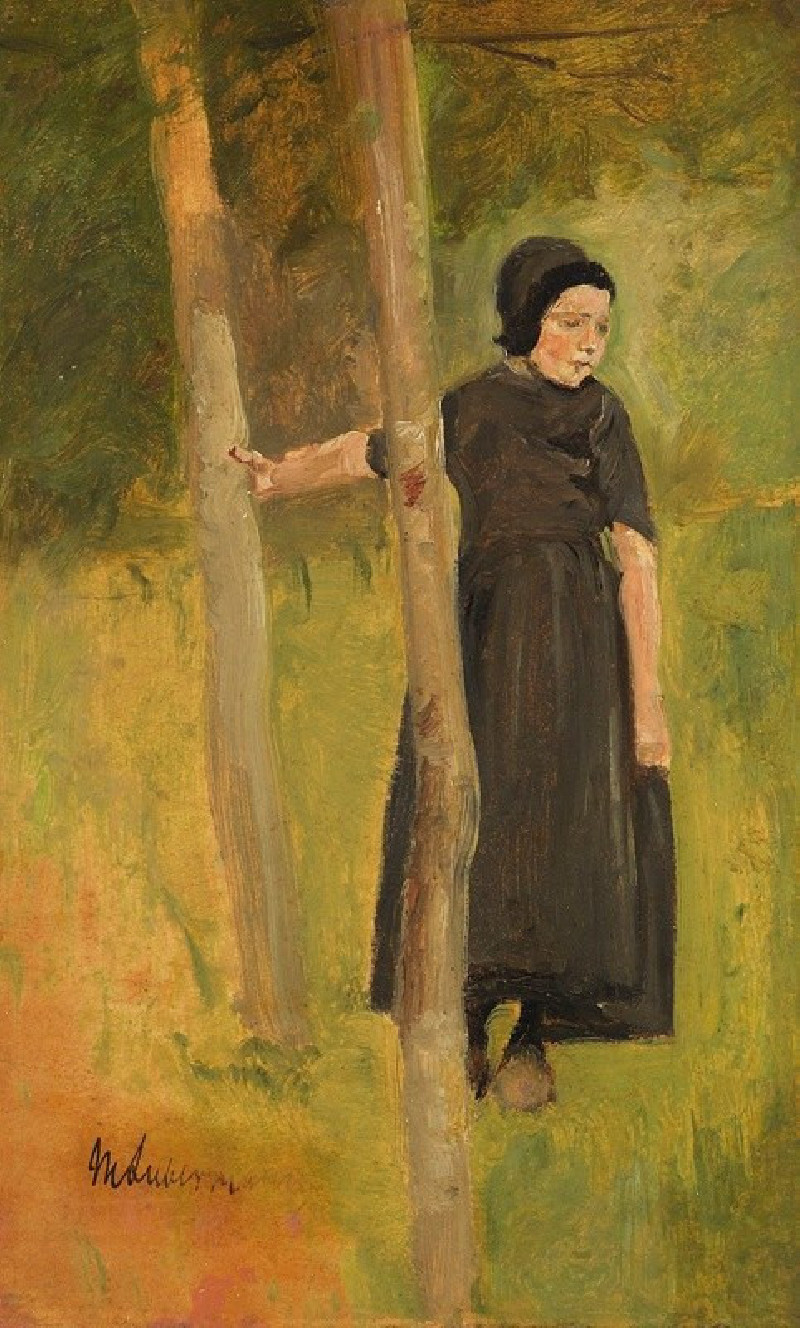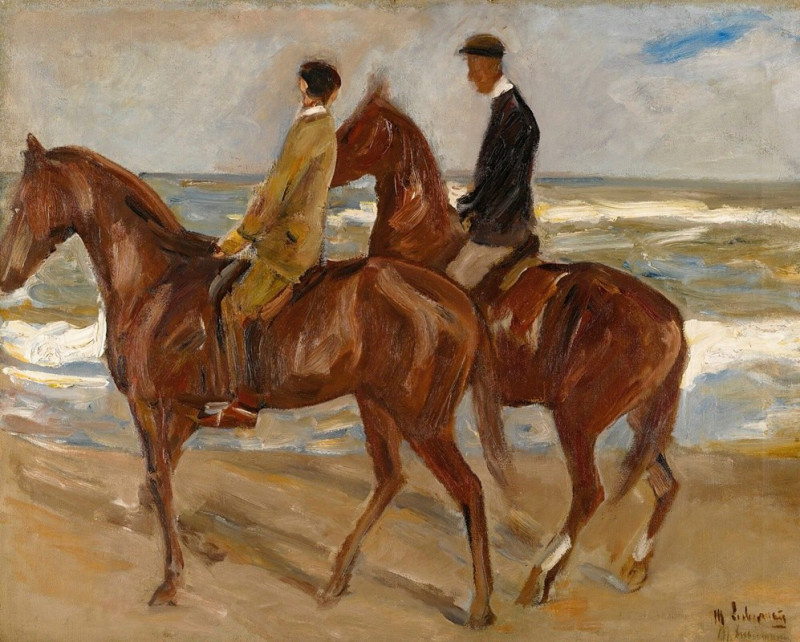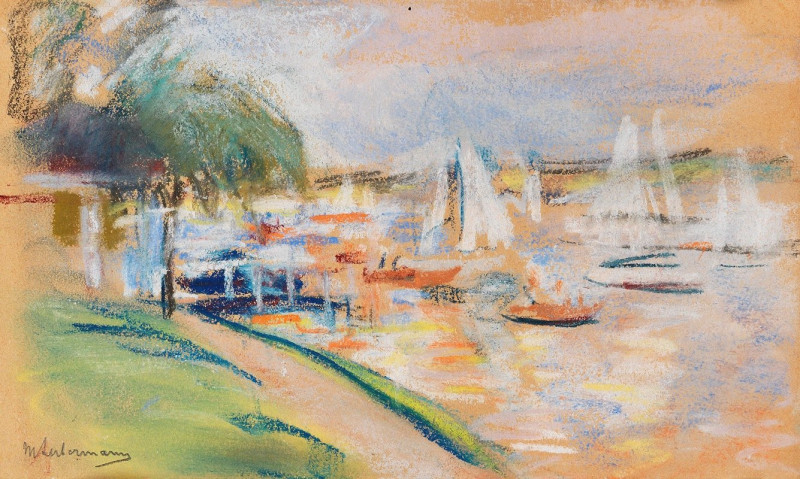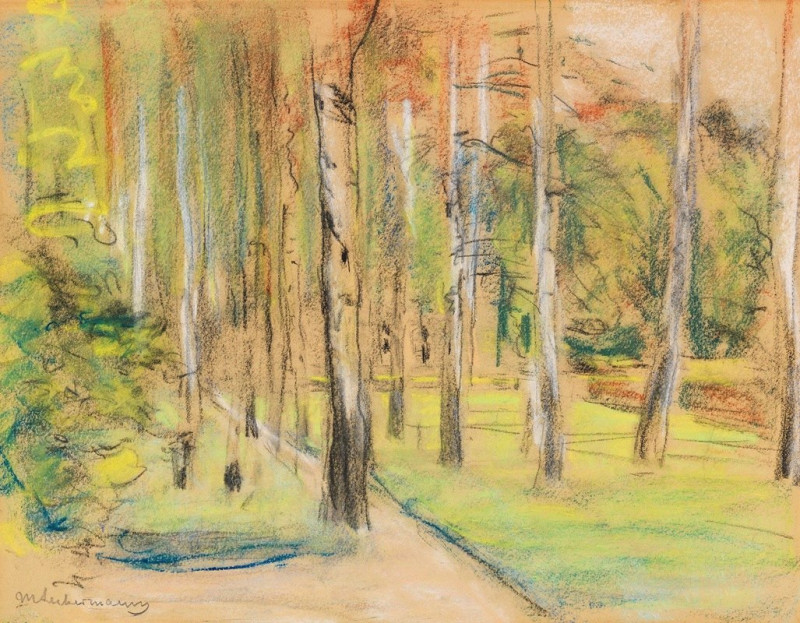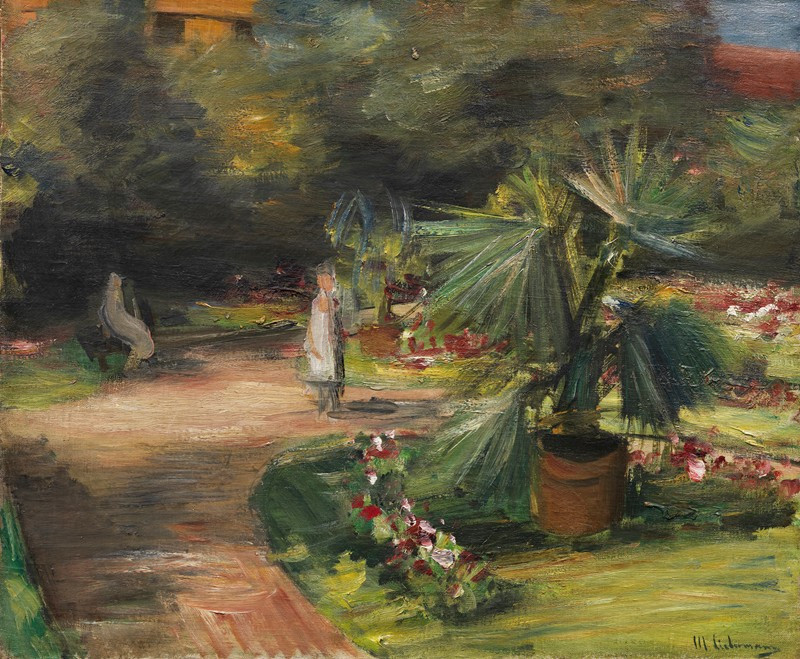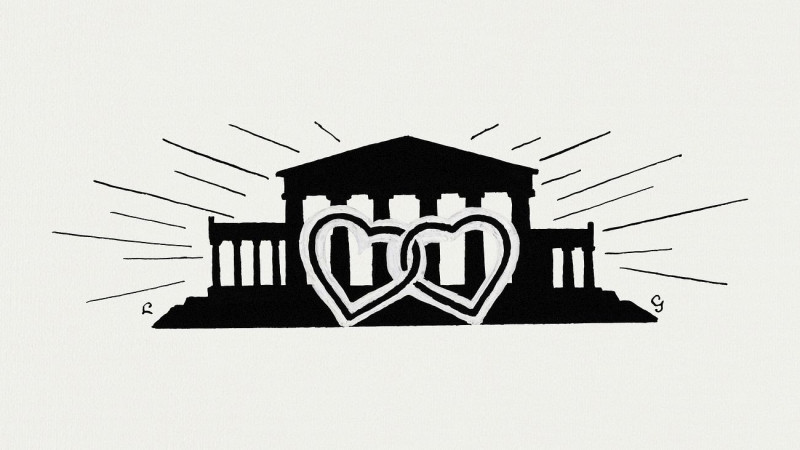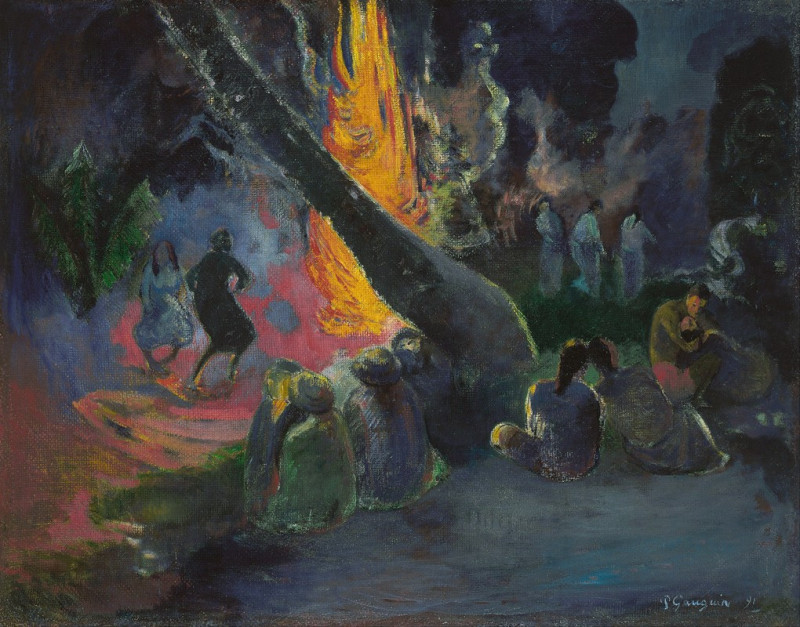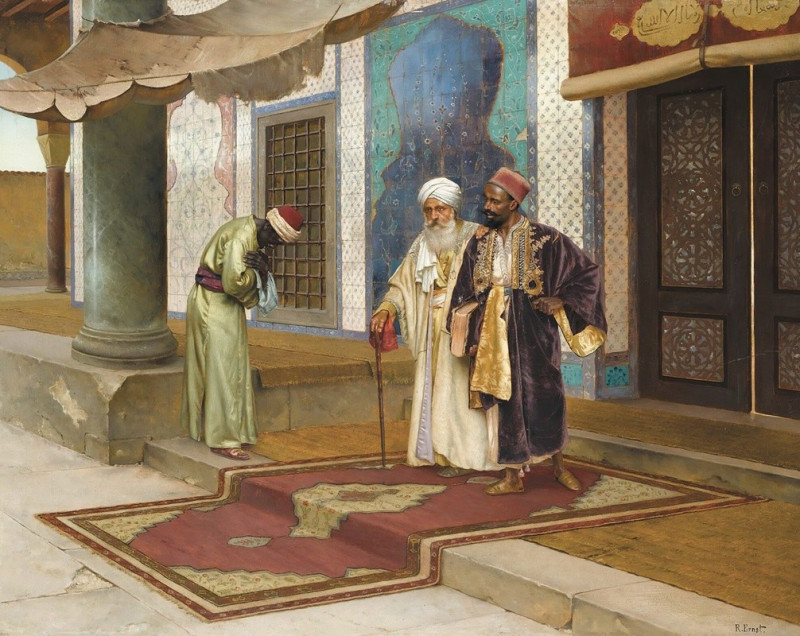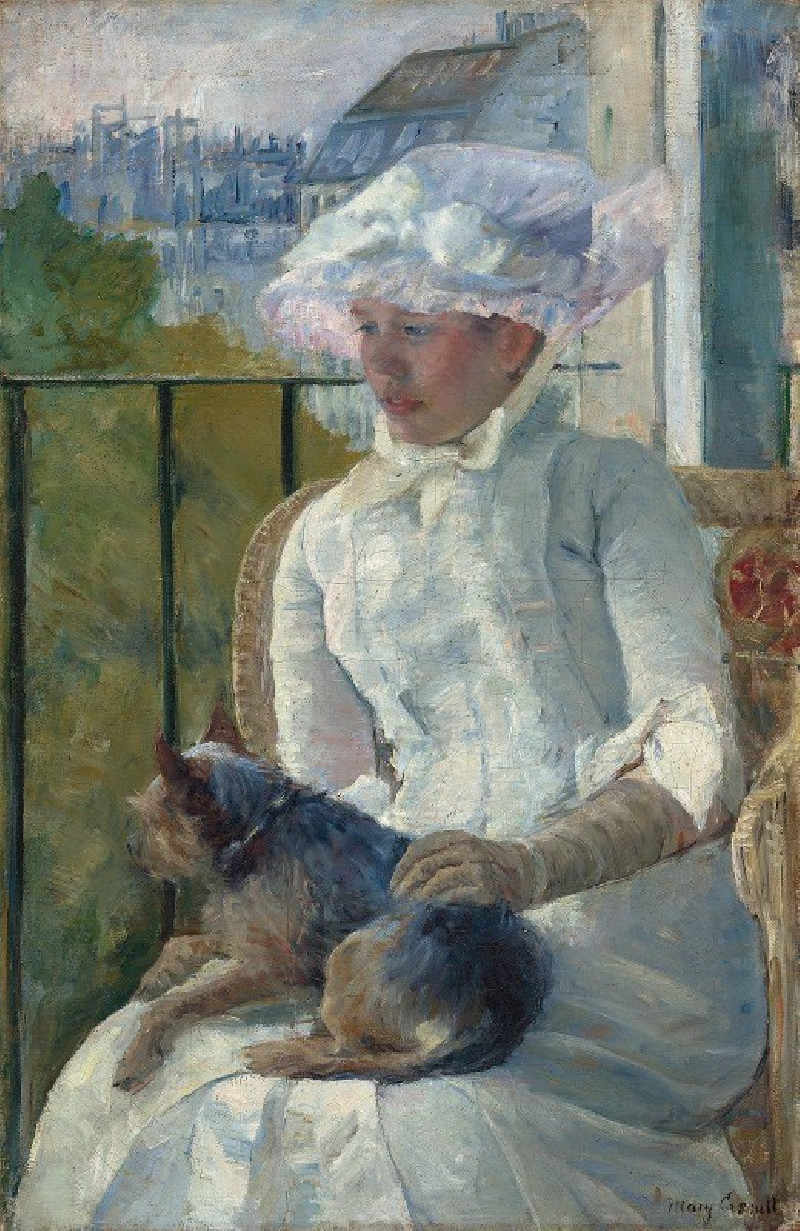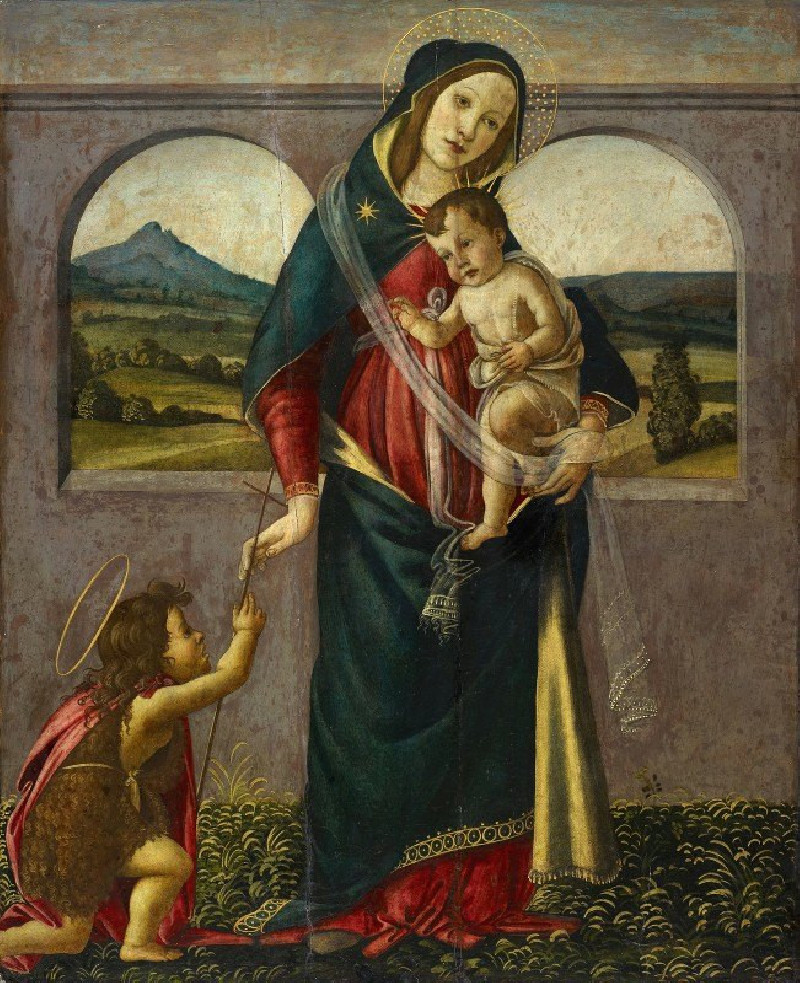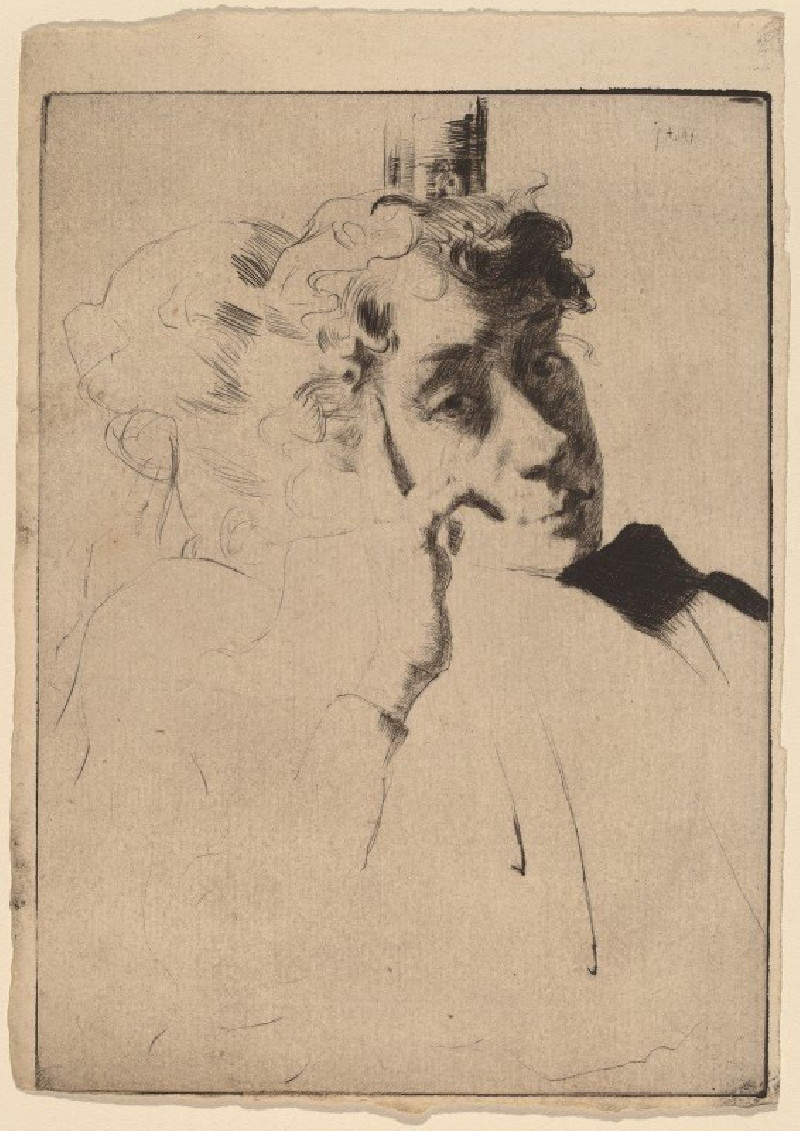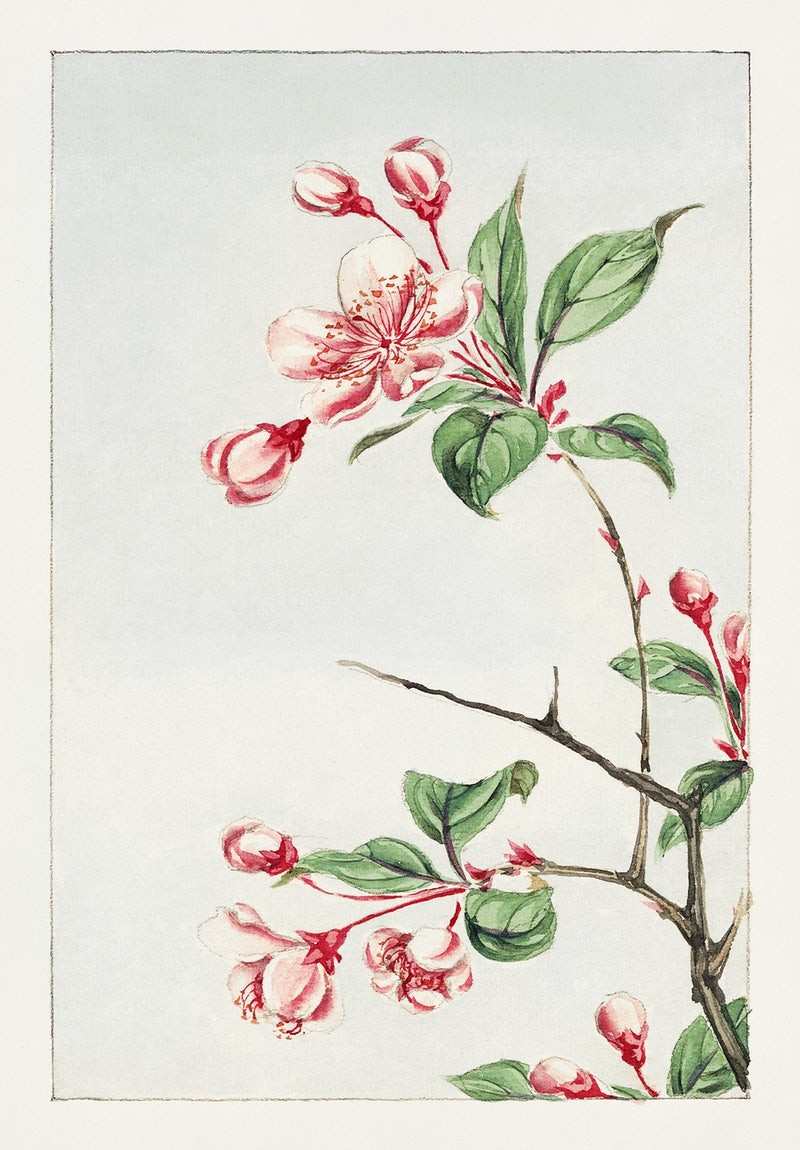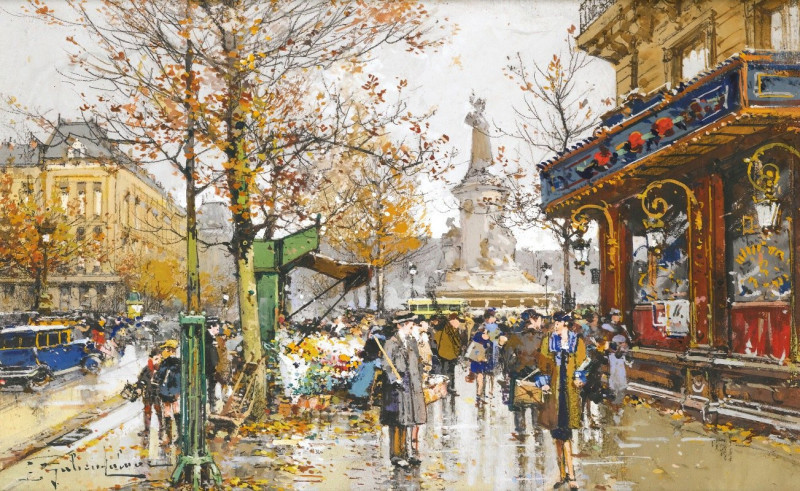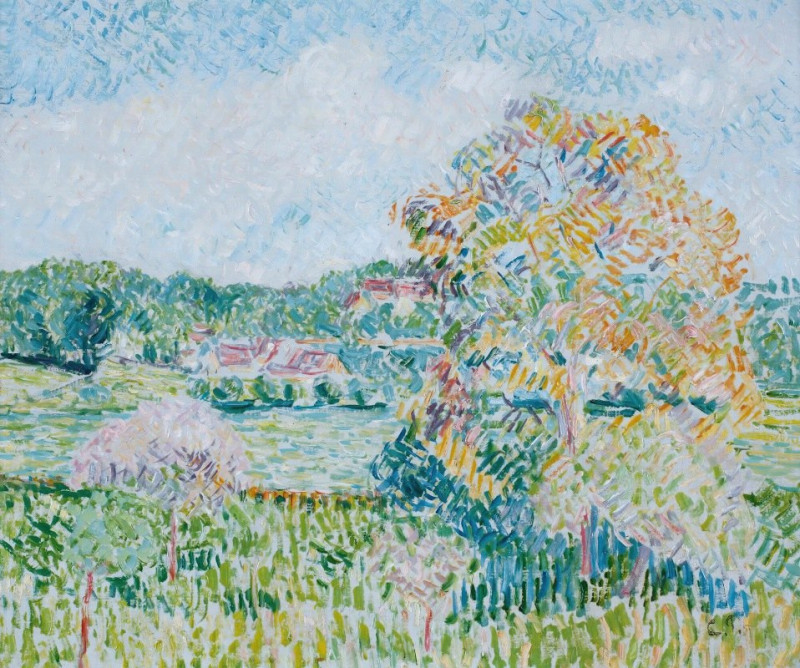Der Nutzgarten in Wannsee nach Südosten (1924)
Technique: Giclée quality print
Recommended by our customers
More about this artwork
Experience the serene beauty of Max Liebermann's "Der Nutzgarten in Wannsee nach Südosten," a captivating masterpiece created in 1924 that exemplifies the artist's affinity for open-air painting and impressionistic flair. This exquisite artwork offers viewers a glimpse into the verdant vegetable garden at Liebermann's summer house in Wannsee, a serene suburb of Berlin.In the painting, the artist masterfully captures a sun-drenched path that draws the eye towards a small, charming house in the background, partially obscured by the lush foliage. The path is flanked by vibrant, blooming flowerbeds and rich greenery, evoking a sense of peace and the bounty of nature. Liebermann's use of quick, loose brushstrokes and a lively palette of greens, blues, yellows, and touches of red, breathes life into the scene, making the garden's tranquility palpable.This artwork is not just a visual delight but also a reflection of Liebermann's passion for gardening which paralleled his artistic pursuits. The garden provided both a sanctuary and a source of inspiration throughout his life, influencing many of his notable works.
Delivery
Returns
Max Liebermann was a German painter and printmaker of Ashkenazi Jewish ancestry, and one of the leading proponents of Impressionism in Germany.
The son of a Jewish fabric manufacturer turned banker from Berlin, Liebermann grew up in an imposing town house alongside the Brandenburg Gate.
He first studied law and philosophy at the University of Berlin, but later studied painting and drawing in Weimar in 1869, in Paris in 1872, and in the Netherlands in 1876–77.

